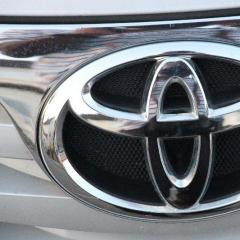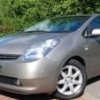Leaderboard
Popular Content
Showing content with the highest reputation on 01/05/2015 in all areas
-
iirc it's either 60 or 62l. Bear in mind that the reserve is around 9-10 litres so if you had driven down to that then 53l to fill is about right..2 points
-
Having read that a typical cost of air conditioning service might be £90 assuming nothing was found to be at fault,, I smiled to myself. The last time I had our prius serviced , they recommended an air conditioning service and I asked what this would entail. I was informed that the refrigerant needed to be changed due to its age and the system needed to be cleaned. My background encompasses several years spent in the air conditioning industry and the service description made me smile in that I could see no point in putting the "expert" on the other end of the phone right. Air conditioning technicians have to be properly trained which normally takes a minimum of 3 years (rather than a 4 week module on a motor mechanics course) and additionally, they need to be regularly updated and appraised of the latest F gas regulations which are in place to police the refrigeration industry with one of the principal aims being to prevent the release of refrigerant gases to the atmosphere.. A refrigeration service should consist of checking the refrigerant charge level, tracing and repairing all leaks, where necessary, cleaning condensing coils where possible , cleaning and disinfecting evaporator coils, cleaning, disinfecting and unblocking condensate drainage systems, checking off coil temperatures and cleaning or changing air filters. At no point does changing refrigerant because it is old, worn out or just for the hell of it enter into the procedure. Granted, in order to find a leak it is good practice to remove all refrigerant and send it away to be recycled, pressurise the system with dry nitrogen in order to locate and repair the leak ( it is also possible to recharge the system with a UV sensitive dye marker in order to allow future leaks to be more easily detected). Most modern car air conditioners still use a type of refrigerant which first came onto the market about 20 years ago. This refrigerant is referred to as R134A. One of the well known snags with R134A is that it is a mixture of compounds and one of the components of the compound has an extremely small molecular size meaning that it can actually migrate through apparently solid copper pipes! The result of this means that the entire compound becomes ineffective as a refrigerant and the air conditioning ceases to be able to cool whilst the operating pressure of the refrigerant appears close to normal. It is this phenomenon which leads to people thinking incorrectly that there is a need to routinely change refrigerant. The motor industry in general have turned a blind eye to this publicly but have never the less, developed air conditioner systems which have additives and coatings on the various components which will seal the tiny and almost impossible to detect sources of leaks. Modern air conditioner systems are therefore far more reliable than their ancestors of 10 years ago and more. Modern air conditioner systems which leak refrigerant will, most likely have a good old fashioned leak which requires fixing and a good place to start is at the pipe unions and flexible pipes. An air conditioner service should take approximately 15 minutes plus the cost of a pollen filter and a few squirts of disinfectant and given that it would be carried out at the same time as general routine service should not cost anything like £90. Air conditioner repairs however, are a minefield. The cost in labour may be extremely high due to the nature of the refrigerant. It may take hours to painstakingly trace a leak.. Given the nature of some of the leaks, it can even be necessary to start to guess at which components may be porous and replace them on a trial and error basis. Given thiese diffficulties, it becomes easier to see why garages may wish to harvest funds from the routine jobs in order to subsidise the costs of fault diagnosis. Roll on the day when some clever person develops a refrigerant which has large sized molecular constituents which would allow for simpler leak detection techniques than currently used by professionals on R134A systems. Needless to say, I service my air conditioning myself and would not hesitate to have the car professionally degassed and not bother repairing the leak should one materialise since the cost of a lasting repair would probably be totally disproportionate to the residual value of the vehicle with air conditioning not working.1 point
-
There are a number of specialist Toyota breakers in the Bolton and Bury area - can get numbers if required those or somewhere similar may work ou for you. It is a case of keeping looking as these cars get older and the parts become more scarce.1 point
-
It's a hybrid engine. It runs on the atkinson cycle and one of the down sides of this is high compression and high NOx. The benefits of the atkinson cycle is much improved fuel economy. The EGR system will reduce the NOx. Comparison of atkinson engines compression ratios against a diesel and a 1.3 petrol engine. You can see why they need EGR. Yaris HSD compression ratio: 13.4:1 Prius HSD " ": 13.0:1 Avensis DIESEL ratio: 15.8:1 Ford Fiesta 1.3 petrol: 9.5:1 http://en.wikipedia.org/wiki/Atkinson_cycle http://en.wikipedia.org/wiki/Hybrid_Synergy_Drive I don't know if this comes into the category of splitting hairs, but the ICE is not a true Atkinson cycle engine mechanically, but rather a a modified Otto cycle piston engine using the Atkinson cycle by way of computer controlled valve timing to achieve the Atkinson cycle. Mentioning just case anyone is interested.1 point
-
While I have great respect for a lot of what GC has to say on all things Prius, I do not really buy into this fixation about using RON 98 fuel in a car that is spec'ed for RON 95. I have read a lot of GC's experiences that led to the conclusions he has come too, but my analysis of the information presented is that it has much more to do with using fuel that is possibly inferior rather than the RON rating of said fuels. The argument for using higher RON rated fuel, has "better" detergents so cleans your engine better, does not make any commercial sense to me either (I also cannot find any official data to corroborate this assertion, but find data that says the opposite--hence my viewpoint). I can't see a business prospering by selling an inferior product that destroys the consumer's car. All fuels have detergents. Detergents are a valid commercial marketing tool and will keep a customer coming back if the consumer finds a particular brand works well to keep their engine running smooth. At the end of the day, I'm not about to tell anyone not to put RON 98 in their car, if they have a firm belief that that's what they need, then they are welcome to spend the extra money to do that. I just like to offer my experience of having no such problems using exclusively RON 95 fuel. Another thing to consider, this information is UK specific and I do not believe it translates internationally. Each country has their own standards and processes which are tailored to the market and geography of the target country. My personal experience is that I got better (sometimes much better) performance on European sourced fuel--Croatia being one of the places. On the subject of ethanol, I have found that, yes, there is a slight drop in fuel economy (comparing like for like) when compared to non-ethanol (E0) fuel. But the drop is not as large as the drop in using RON 98 E0. So, I'm not about to pay more for a fuel that gives me lower fuel economy. As I say, though, each to their own. Finally, if you are going to use fuel system cleaner additives (i. e. your own custom added detergent package), you are just as well to add it to the correct RON 95. More is most always not better. I haven't been as detailed as I might like to be so I hope that what I have said still makes sense, but I don't really don't want to a) repeat information I have already posted in other threads and b) this post is already long enough. If there is interest to discuss this subject matter further, I'd be happy to start a new thread to do this, rather that continue to hijack the OP's thread taking it on this tangent. HTH1 point
-
Hi guys Thanks for the replies. Just to say I managed to sort it out. In case anyone on here has a similar issue in the future, the inside of the boot door has a section of fabric (it's actually thin flexible plastic with a fabric covering) in the middle of it. This is secured to the plastic of the inside of the rear door with about 8 plastic studs. These were a pain to get out but I found the claw end of a small hammer did the trick without breaking any, though they are a little distorted now. Not the best design feature of the Yaris. Anyway, once this bit of fabric is off you can get access to the locking mechanism. Essentially this is a 4 part lever, one bit being linked to the central locking. My girlfriend must have pushed the boot button just as I turned the key in the drivers door as this part of the lever system had become unhooked, so when pushing the button in nothing was happening. Anyway,very easy to reconnect yourself and avoid a garage bill Cheers!1 point
-
It is interesting to speculate if all existing cars were automatic, and somebody "invented" a manual gear-box as a supposed economy device or driving-pleasure experience. The chances of it catching on would be very low, assuming the safety experts were happy with a mechanism that required you to let go of the steering wheel with one hand periodically to change gears1 point
-
Michael. When you said you checked the exhaust sensors, how did you check them. With a diagnostic scanner? Remember you said that the EML light illuminated. So long as the EFI fuse has not been pulled or the battery not disconnected, code will be stored. You need the diagnostic code to find out why. Did you take the car to a different mechanic/garage. It sounds like you went back to the same original garage! I hope I am wrong. You have done a compression test, and so long as it is done properly the result should be valid. The garage would know this if you have told them, so an engine strip down is not necessary. The bores cannot be honed as they are lined with a special material. Mikes post about the valve guides is valid too. The whole point of your sooty plugs is a possible fueling/ignition/ECU/emission problem. You did buy a OBD2 scanner? A garage/tuner with a state of the art diagnostic and emission equipment, will see how the engine is performing. So long as they have your cars parameters, they should be able to find out what is really going on. It does not need to be a Toyota dealership either! I always start at the cheapest fix/test and work from there. This garage went for something which in my opinion was something expensive. They should have taken photos (very unlikely). Lets hope the engine swap works since you are committed now. Good luck and when you get the car back give us an update (rant). Best regards, Konrad1 point
-
Hi Michael, Welcome to the club. From what you have said, it sounds like the coil packs may be the problem. Probably misfire causing the spark plugs to get sooty. It could be something else. I could say, recheck the connections to the coil packs/spark plugs. The other problem is the O2 sensor, pre cat located in the exhaust manifold. That could be giving the wrong signal. Cylinders 1 and 4 share one sensor, whilst 2 and 3 share the other. This may go some way to explain why 2 and 3 spark plugs are sooty. You need an OBD2 code reader to see what codes have been stored. Lucky code readers are not expensive if bought from eBay or similar. The other members may advise which is the best reader. Search the forum and you should find the answer. Konrad PS get a second opinion from a trusted mechanic.1 point






